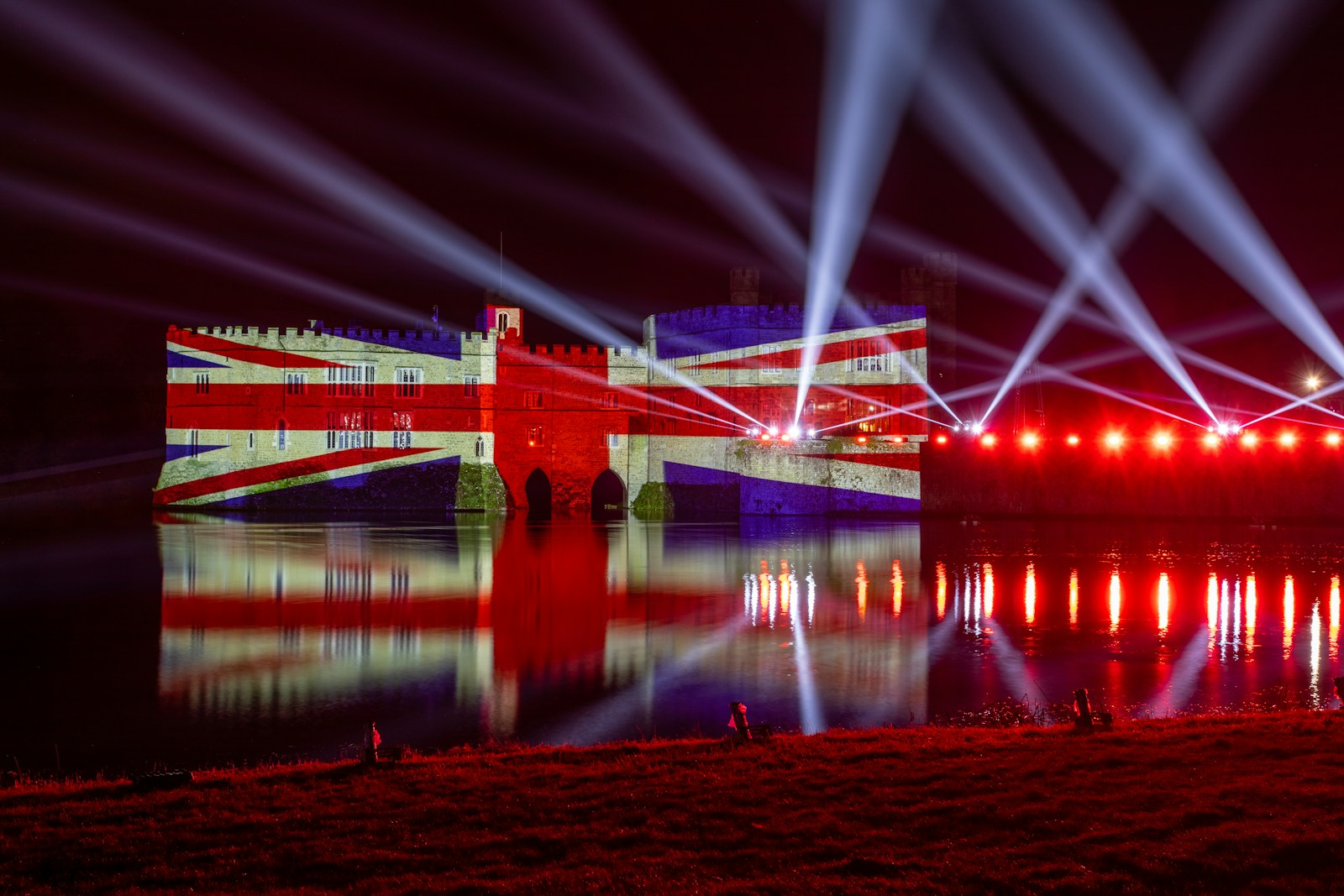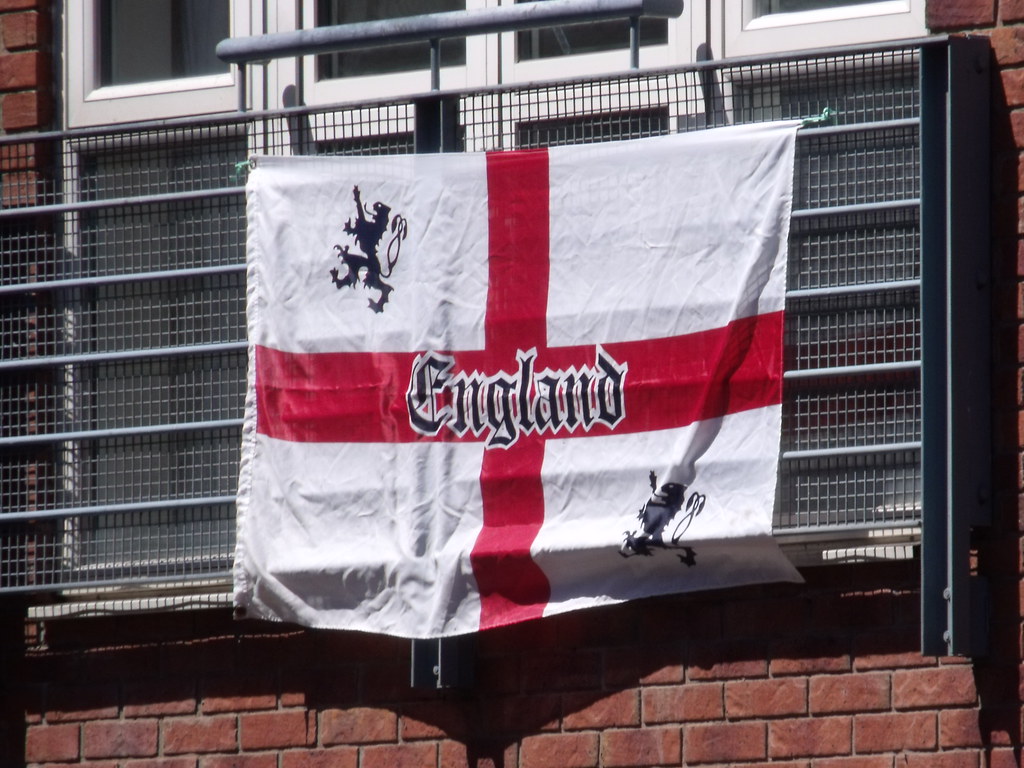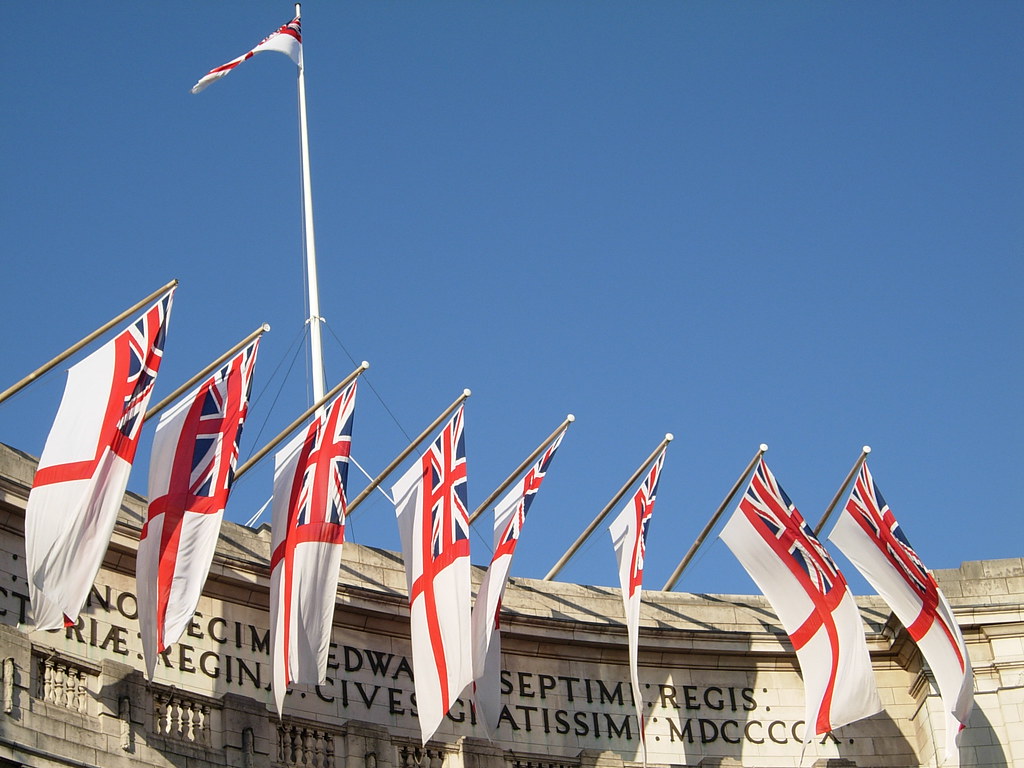
England’s story spans millennia, from ancient stone monuments to modern parliamentary democracy, weaving a rich tapestry of triumph and tragedy, innovation and tradition. This island nation has produced world-changing ideas, revolutionary technologies, and cultural contributions that continue to shape global society. The following collection of facts and figures offers glimpses into the remarkable journey of the English people—their monarchs and commoners, their conquests and defeats, their artistic achievements and scientific breakthroughs. From the mysterious rituals of prehistoric Stonehenge to the political complexities of Brexit, these historical snapshots reveal how a relatively small country on the edge of Europe came to influence world history in such profound and lasting ways. They remind us that English history is not merely a chronicle of the past but a living legacy that continues to evolve and shape our present understanding of governance, culture, and identity.
Prehistoric and Roman Britain
- The oldest human remains found in England date to around 500,000 years ago, with Neanderthal teeth discovered in Kent’s Swanscombe area.
- Stonehenge, England’s most famous prehistoric monument, was constructed in several stages between approximately 3000 BC and 1500 BC, requiring an estimated 1.5 million days of labor to complete.
- The Sweet Track in Somerset is the oldest known engineered roadway in England, built in 3807 BC according to tree-ring dating.
- When the Romans invaded in 43 AD under Emperor Claudius, they brought 40,000 troops and established Londinium (London) as a major settlement just seven years later.
- Hadrian’s Wall, built beginning in 122 AD, stretches 73 miles (117 km) from coast to coast and required an estimated 15,000 men working for six years to complete.
- The Romans introduced numerous food items to England, including apples, pears, plums, cabbages, onions, leeks, carrots, asparagus, and herbs such as rosemary and thyme.
- At the height of Roman Britain, there were around 10,000 miles of roads, with four major highways connecting the province.
- The Romans withdrew from Britain around 410 AD after nearly 370 years of occupation, partly due to increasing pressure on their continental territories.
Anglo-Saxon and Viking Age
- Following Roman withdrawal, Britain was settled by Germanic tribes—Angles, Saxons, and Jutes—giving rise to “Angle-land” (England).
- The Anglo-Saxon Chronicle, begun during Alfred the Great’s reign (871-899), is one of the most important historical records of early England and continued to be updated until the 12th century.
- Alfred the Great was the only English monarch to be given the epithet “the Great,” partly for his defense against Viking invasions and his promotion of education and legal reform.
- The Anglo-Saxon epic poem “Beowulf,” composed around 700-1000 AD, is the oldest surviving epic poem in Old English, consisting of 3,182 alliterative lines.
- During the Viking Age (793-1066), approximately half of England came under Danish control, an area known as the Danelaw.
- The Old English language contained no Latin-derived words until the Christian missionaries arrived; by the end of the Anglo-Saxon period, approximately 450 Latin-derived words had entered the language.
- The Domesday Book, commissioned by William the Conqueror in 1085, recorded 13,418 settlements in England.
- The Viking leader Cnut the Great ruled England as part of a North Sea Empire that included Denmark and Norway from 1016 to 1035.
Medieval England
- The Norman Conquest of 1066 introduced feudalism to England, with William the Conqueror claiming all land as his personal property and granting estates to approximately 180 barons in return for military service.
- Windsor Castle, founded by William the Conqueror around 1070, is the oldest and largest inhabited castle in the world and has been home to 40 monarchs.
- The White Tower, the central keep of the Tower of London, was built by William the Conqueror and completed around 1100, with walls 15 feet thick at the base.
- The Third Crusade (1189-1192) cost England an estimated 100,000 marks, approximately twice the annual income of the English crown at that time.
- Magna Carta, signed in 1215 by King John, originally consisted of 63 clauses, though only three remain part of English statute law today.
- The Model Parliament of 1295 under Edward I is considered the first representative English parliament, establishing the pattern of including commoners as well as nobility and clergy.
- The Black Death (1348-1349) killed an estimated 40-60% of England’s population, causing such labor shortages that wages for surviving workers rose by approximately 50%.
- During the Hundred Years’ War (1337-1453), the English army at Agincourt in 1415 was outnumbered by French forces approximately 3-to-1 but achieved a decisive victory.
- Medieval London’s population reached approximately 80,000 by 1300, making it one of the largest cities in Europe.
- The Wars of the Roses (1455-1487) saw 105 people with royal blood killed over three decades of intermittent conflict.
Tudor Period
- Henry VIII ruled for 38 years (1509-1547) and had six wives, executing two (Anne Boleyn and Catherine Howard).
- Under Henry VIII, approximately 800 monasteries, nunneries, and friaries were dissolved, representing about a quarter of the land in England.
- The first English lottery was held in 1569 during Elizabeth I’s reign, with tickets costing 10 shillings each and prizes including silver plates and tapestries.
- Elizabeth I’s reign (1558-1603) lasted 44 years and 127 days, during which she never married, earning her the nickname “The Virgin Queen.”
- When the Spanish Armada approached England in 1588, it consisted of 130 ships carrying 30,000 men, compared to England’s 200 smaller ships with 16,000 men.
- William Shakespeare wrote approximately 37 plays and 154 sonnets during the Elizabethan and early Jacobean periods, significantly expanding the English vocabulary with an estimated 1,700 new words.
- During Elizabeth I’s reign, the population of England grew from approximately 3 million to 4 million people.
- The first permanent English settlement in the Americas, Jamestown, was established in 1607, named after King James I.
Stuart Era and Civil War
- The Gunpowder Plot of 1605 involved 36 barrels of gunpowder placed in the undercroft beneath the House of Lords, enough to completely destroy the building and kill everyone inside.
- The English Civil War (1642-1651) resulted in approximately 200,000 casualties, representing about 4% of the population.
- Between 1649 and 1660, England was a republic known as the Commonwealth, the only time in history when England had no monarch.
- The Great Fire of London in 1666 destroyed approximately 13,200 houses, 87 parish churches, and most of the buildings of the City authorities, displacing about 100,000 people.
- The scientific method was formalized in England during this period, with Francis Bacon’s “Novum Organum” (1620) and the founding of the Royal Society in 1660.
- The Bank of England, established in 1694, is the second-oldest central bank in the world (after Sweden’s Riksbank).
- The Act of Union in 1707 unified England and Scotland into Great Britain, creating a shared parliament and free trade between the nations.
- By the end of the Stuart period, London had grown to approximately 575,000 inhabitants, becoming Europe’s largest city.
Georgian Era and Industrial Revolution
- The Industrial Revolution began in England around 1760, with the number of patents registered increasing from 92 in the 1750s to 477 in the 1780s.
- During the Georgian period, approximately 7,000 men were executed by hanging, often for minor crimes such as stealing goods worth more than one shilling.
- The Battle of Trafalgar (1805) secured British naval supremacy with a decisive victory over the combined French and Spanish fleets, with 27 British ships defeating 33 enemy vessels.
- The Napoleonic Wars (1803-1815) cost Britain approximately £831 million, contributing to a national debt that reached 250% of GDP.
- The 1821 census recorded England’s population at 12 million, having doubled in just 70 years due to improved agricultural techniques and industrial growth.
- The world’s first public railway using steam locomotives, the Stockton and Darlington Railway, opened in northern England in 1825, covering 26 miles.
- The Factory Act of 1833 prohibited the employment of children under 9 in textile factories and limited the working hours of those aged 9-13 to 48 hours per week.
- By 1850, Britain was producing approximately 50% of the world’s iron, coal, and cotton cloth, despite having just 2% of the global population.
Victorian Era
- Queen Victoria’s reign (1837-1901) lasted 63 years and 216 days, the longest of any British monarch until Queen Elizabeth II.
- The Great Exhibition of 1851 in London’s Crystal Palace attracted over 6 million visitors (equivalent to a third of Britain’s population) and displayed 100,000 exhibits from around the world.
- During Victoria’s reign, the British Empire expanded to cover approximately one-quarter of the Earth’s land surface and govern about one-quarter of the world’s population.
- The London Underground opened in 1863 as the world’s first underground railway, initially running steam-powered trains on a 3.75-mile route.
- Between 1837 and 1901, infant mortality in England declined from approximately 150 deaths per 1,000 live births to about 140, a modest improvement reflecting ongoing challenges.
- The Married Women’s Property Act of 1882 allowed women to own and control their own property for the first time, rather than automatically transferring it to their husbands upon marriage.
- Charles Darwin’s “On the Origin of Species” (1859) sold all 1,250 copies of its first printing on the first day of publication.
- The Football Association was founded in 1863, establishing the first standardized rules for soccer, now the world’s most popular sport.
- The Victorian era saw a dramatic expansion of literacy, with the percentage of adults able to read increasing from approximately 55% in 1840 to over 95% by 1900.
- During Victoria’s reign, life expectancy in England increased from approximately 40 years to 46 years, reflecting improvements in public health and medicine.
Early 20th Century and World Wars
- The 1901 census recorded over 1.3 million domestic servants in England and Wales, representing England’s largest occupational category and about 4% of the population.
- The suffragette movement in England saw approximately 1,000 women imprisoned between 1908 and 1914 for actions including vandalism, arson, and hunger strikes.
- During World War I (1914-1918), Britain recruited approximately 5 million men, with 700,000 killed and 1.7 million wounded.
- The Spanish Flu pandemic of 1918-1919 killed approximately 228,000 people in Britain, more than the British battle deaths in World War I.
- The BBC was founded in 1922 and received its royal charter in 1927, with radio licenses increasing from about 36,000 in 1922 to 2.2 million by 1926.
- The General Strike of 1926 involved 1.7 million workers and lasted nine days, representing the largest industrial dispute in British history.
- During the Great Depression, unemployment in Britain reached 22% in 1932, with particularly severe effects in industrial regions of northern England.
- The Battle of Britain (1940) involved approximately 2,900 RAF pilots (including 574 from other countries) defending against the Luftwaffe, with Churchill famously remarking, “Never in the field of human conflict was so much owed by so many to so few.”
- The Blitz (1940-1941) killed approximately 43,000 civilians across Britain, with London enduring 57 consecutive nights of bombing.
- By the end of World War II, approximately 60% of London’s housing stock had been damaged or destroyed by German bombing.
Post-War to Present
- The National Health Service, established in 1948, employed 144,000 people on its first day and had a budget of £437 million (equivalent to approximately £15 billion today).
- The Festival of Britain in 1951 attracted 8.5 million visitors to its main South Bank site in London, showcasing post-war recovery and modernization.
- During the 1950s, approximately 500,000 immigrants arrived in Britain from Commonwealth countries, particularly the West Indies, India, and Pakistan, significantly changing Britain’s demographic composition.
- Between 1950 and 1965, the percentage of British households owning a television increased from 10% to 80%.
- The Queen’s coronation in 1953 was the first to be fully televised, with over 27 million people in Britain (out of a population of 36 million) watching the ceremony.
- The Beatles released 213 songs across 13 albums between 1962 and 1970, selling approximately 600 million records worldwide.
- The Winter of Discontent (1978-1979) saw 29.5 million working days lost to strikes, contributing to the election of Margaret Thatcher as Prime Minister.
- Margaret Thatcher served as Prime Minister for 11 years and 209 days (1979-1990), the longest continuous tenure of any British Prime Minister in the 20th century.
- The Falklands War of 1982 cost Britain approximately £1.5 billion and resulted in 255 British military deaths.
- The privatization programs of the 1980s and 1990s transferred approximately 40% of the UK public sector to private ownership.
- The Channel Tunnel, opened in 1994, is 31.4 miles long, with 23.5 miles running under the English Channel.
- Tony Blair’s Labour government (1997-2007) introduced approximately 40,000 new laws and regulations during its time in office.
- The 2001 census was the first to include a question about religion, finding that 71.7% of people in England and Wales identified as Christian, 2.8% as Muslim, and 15.1% as having no religion.
- The 2012 London Olympics involved 10,490 athletes from 204 nations, with Great Britain winning 65 medals (29 gold, 17 silver, and 19 bronze).
- The United Kingdom’s EU membership referendum in 2016 resulted in a 51.9% vote to leave, with voter turnout at 72.2%, the highest for any UK-wide vote since 1992.
- As of 2021, England has a population of approximately 56 million people, making it the most populous country in the United Kingdom, accounting for about 84% of the UK total.
- London’s population has grown from approximately 1 million in 1800 to over 9 million today, making it one of the world’s largest and most diverse cities.
- England currently has 32 UNESCO World Heritage Sites, ranging from prehistoric Stonehenge to the industrial landscapes of the Lake District.
Quirky and Lesser-Known Facts
- The world’s oldest continuous parliament is on the Isle of Man (not technically part of England but a Crown Dependency), with the Tynwald dating back to 979 AD.
- The English language has borrowed words from approximately 350 other languages, with French and Latin providing the most loanwords.
- Between 1066 and 1362, English kings primarily spoke French rather than English, with Henry IV (crowned 1399) being the first monarch since the Norman Conquest to speak English as his mother tongue.
- The Great Smog of London in 1952 killed approximately 12,000 people and led to the Clean Air Act of 1956.
- England’s oldest pub is claimed to be Ye Olde Trip to Jerusalem in Nottingham, allegedly established in 1189, though this date is disputed by historians.
- The world’s first chocolate bar was created by Joseph Fry in Bristol in 1847, revolutionizing how chocolate was consumed.
- During World War II, Buckingham Palace was bombed nine times, with King George VI and Queen Elizabeth (the Queen Mother) famously refusing to leave London during the Blitz.
- The English landscape has approximately 500,000 miles of hedgerows, many dating back hundreds of years and providing crucial wildlife habitats.
- The world’s first postage stamp, the Penny Black featuring Queen Victoria, was introduced in England in 1840, with 68 million issued in the first year.
- The tradition of afternoon tea was introduced in the 1840s by Anna, Duchess of Bedford, to address hunger between lunch and dinner, which was typically served late in the evening.
- Oxford University is the oldest university in the English-speaking world, with teaching dating back to 1096, and consists of 39 semi-autonomous colleges.
- The Crown Jewels, housed in the Tower of London, include the Sovereign’s Sceptre containing the Cullinan I diamond (530.2 carats), the largest clear cut diamond in the world.
Conclusion
This collection of 100 facts barely scratches the surface of England’s multilayered history. From the ancient stone circles that still stand sentinel over the landscape to the political decisions that continue to reverberate in our contemporary world, English history demonstrates the complex interplay between continuity and change that characterizes all human societies. What makes England particularly fascinating is how a relatively small island nation came to exercise such disproportionate influence on global affairs—through conquest and colonization, certainly, but also through ideas, innovations, and cultural expressions that transcended its geographical boundaries. The institutions, traditions, and values that emerged from England’s historical experience—parliamentary democracy, common law, the English language with its unparalleled literary heritage—continue to shape our world in profound ways. Understanding these historical roots helps us appreciate not only England’s past but also the foundations upon which much of our modern world is built. As England continues to redefine its place in a rapidly changing global landscape, its history remains a vital resource for understanding both its unique national character and its ongoing contributions to our shared human story.









